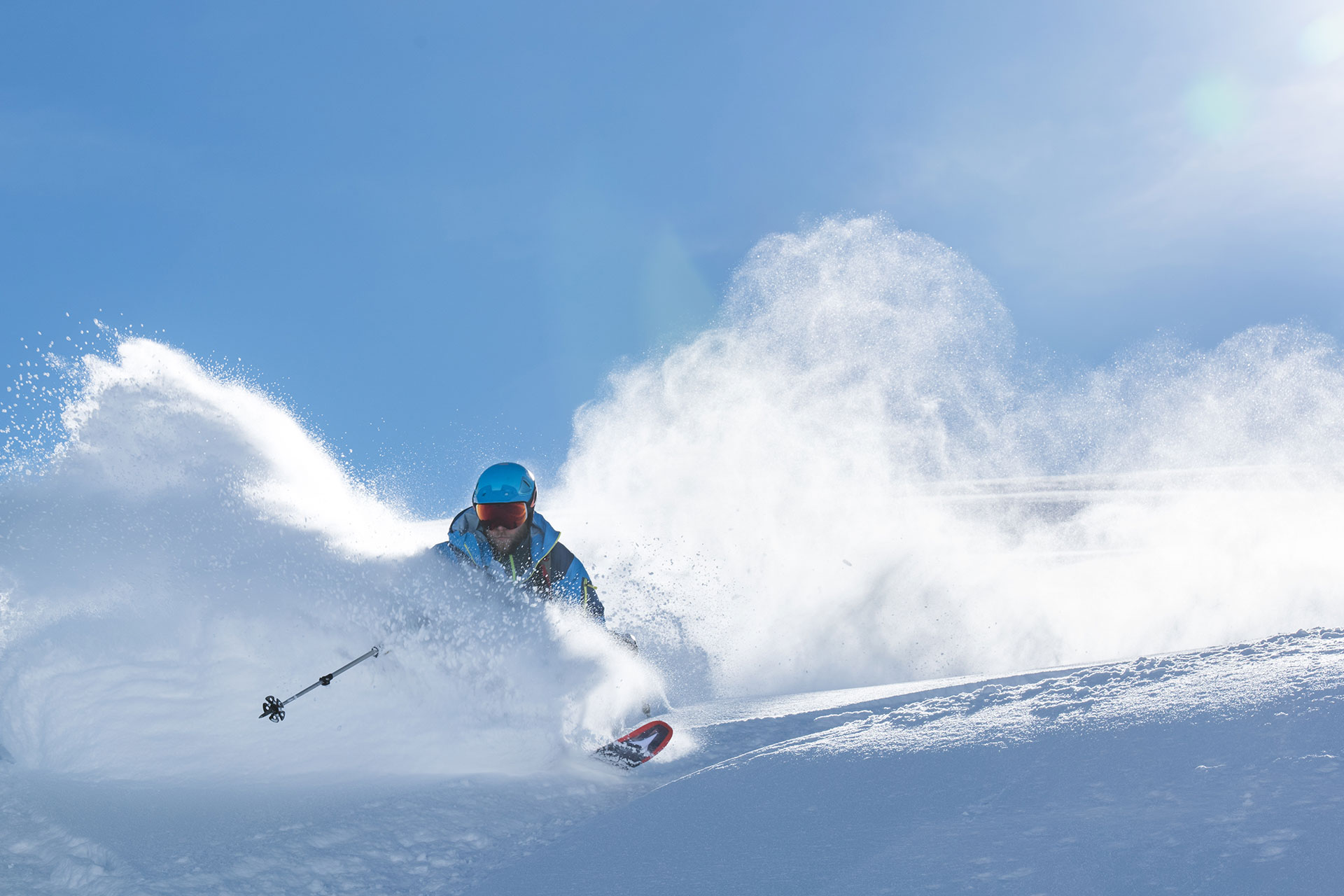Powder skiing and/or riding
The deep stuff (and the steep stuff for that matter) takes a bit of practice. In addition, you can’t guarantee a dump of perfect fresh snow on a week-long holiday - so the great thing about an extended stay in the mountains is that you can wait patiently for powder. Skiing or riding in powder snow is a really different sensation to the piste; practice is definitely key here. It’ll go from being a leg-burner, to feeling like you’re floating… with plenty of getting completely stuck in between. If you’re in Banff or Big White, chances are you’ll be faced with fields of unavoidable powder on the reg so you’ll learn pretty quickly (they don’t groom everything every night). In The Three Valleys or Cardrona and Treble Cone, you can get your practice in just a meter or two off the side of the piste.
The park!
Can we front this by saying please don’t wreck yourself in the park during an ski instructor course! Imagine if you can’t complete your training or (worse!) have to miss an exam… That being said, on a ski season you’ll have the luxury of time to spend lapping the park and meeting people who actually know what on earth you’re supposed to do. It might be worth booking a park-specific lesson to get things going. You’ll learn the basics on jumps and then features like boxes and rails. The great thing about knowing your way around the park is that it’s a good option if the snow or conditions across the wider resort aren’t great - you’ll know you’ve always got a park session in your locker.
Avalanche safety and using avalanche kit
In order to make the most of your newly-perfected powder skills, a ski season is a great opportunity to learn about avalanche safety and how to use avi kit. That way you can head off-piste/beyond the boundary into the backcountry confidently and safely. The quickest way to do this is via a multi-day course which combines theory and practical teaching (and you’ll get a proper certification). Alternatively, you could rent a transceiver, shovel and probe yourself and get someone really knowledgeable to share their wisdom. Make sure you learn how to use each item of kit (and practice!), but also how to read the weather, snow and mountain conditions too. The kit is expensive, but essential, so borrow and rent it first.
Tuning, fixing and waxing your skis/board
When you’re skiing or boarding every day for months, your kit can take a bit of a battering (especially if you’re trying new things in the park and off-piste). A really worthwhile skill to learn is how to take care of your skis or board. There are different levels to this, and you may want to borrow kit first. A good place to start is learning how to wax your skis or board, then you can move on to tuning up the edges and even the full service. We know SnowSkoolers who’ve made some good cash servicing skis on the side!
Turn to the dark side…
If it’s not immediately obvious… skiers, this is your time to strap your feet to a single plank and boarders, it’s about time you got on skis! Learning to ski as a boarder, or board as a skier can be really weird and sometimes more difficult than if you actually learnt from scratch as a beginner. It takes more than a few days to comfortably cruise and catch lifts, as a new boarder or skier, so it’s not that appealing on a week-long holiday where each day is precious. However, when you have a whole season to play with, and just happen to be surrounded by trainee instructors, there really is no excuse! Pick a couple of days when the conditions are mellow and maybe switch kit with someone similar height and shoe size as you. After that, hire for a few days or pick up some cheap, second-hand gear from Facebook marketplace or around town. A word of caution; please don’t push your new skills too far at a crucial point in your ski or snowboard instructor course… an injury could really mess things up and jeopardise your exams or season.
Something a little different
If you’ve given both skiing and boarding a good crack already, why not get stuck into something along similar lines like touring or splitboarding, or even nordic skiing. There’s still lots to learn, but you can perfect it gradually across the season when the conditions are right. Experience is key here - so join a guided session or lesson (maybe you could get a group together) with a pro. You’ll want to have ticked off the avalanche safety skills we previously mentioned too.
